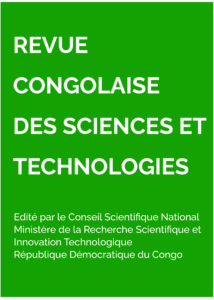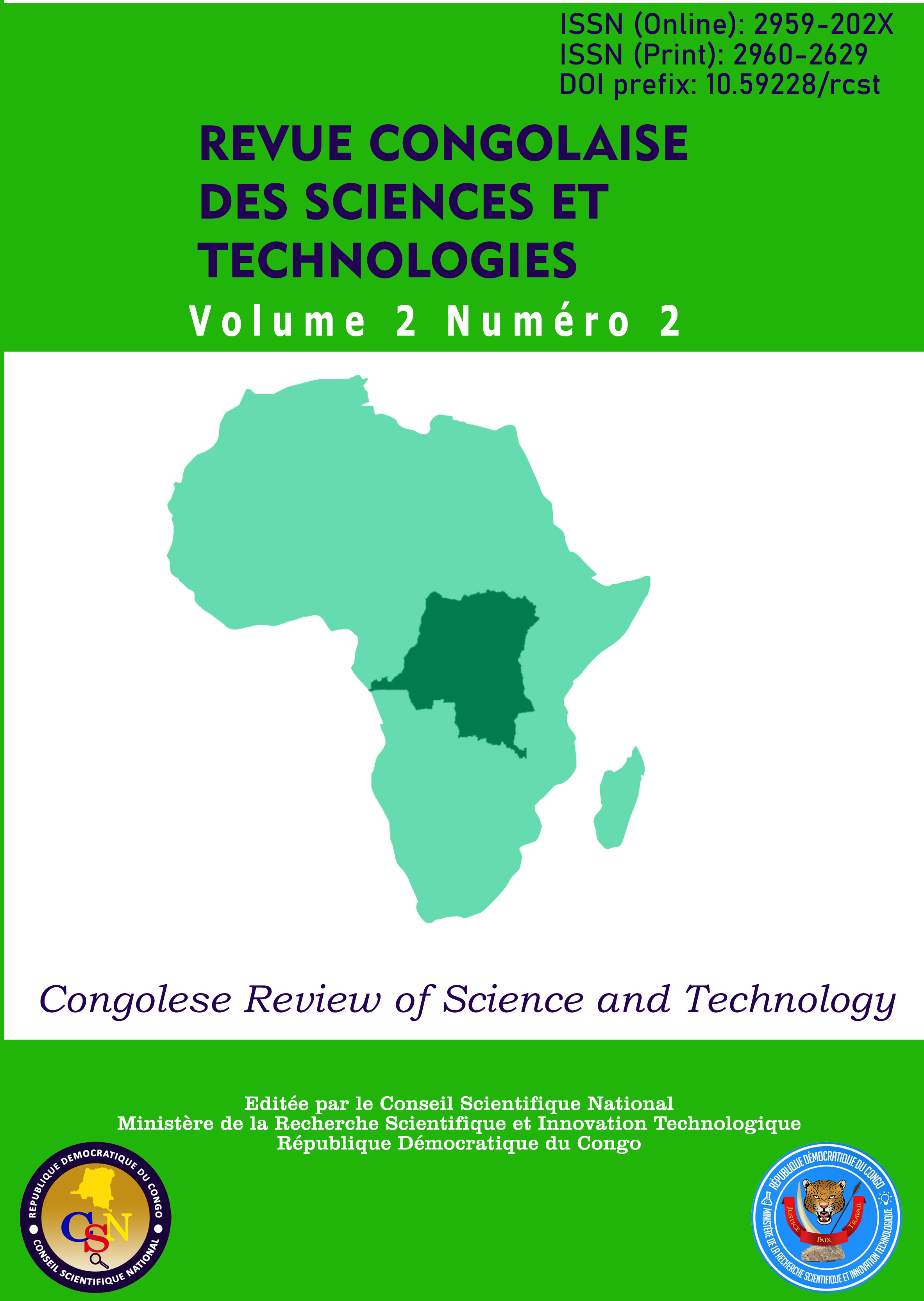The navigable passes of the wandering region of the maritime reach of the Congo River, faced with the evolution of hydrological parameters, what future?
Main Article Content
Abstract
The wandering region of the maritime reach of the Congo River poses enormous problems for the navigation of ocean-going ships because of its recurrent silting up. This study aims to quantify and assess its impact on navigation. It is in this context that we present here, hydrological, hydraulic and sedimentological studies carried out by the Congolese Sea Ways (CSW) for the maintenance and development of the navigation channel with a view to guaranteeing the best navigation conditions for vessels serving the ports of Boma and Matadi. We note an excessive solid contribution compared to the liquid flow and this presents worrying signs of the closing of the passes of the upstream pool of the maritime reach. The probable causes would be the anarchic constructions which destroy the green belts upstream of Boma or even Matadi which cause significant land erosion.
Article Details

This work is licensed under a Creative Commons Attribution-NonCommercial-ShareAlike 4.0 International License.
References
Hydromet, O.T.T. (2017). Hydrologie quantitative. Provence, O.T.T Hydromet, 4p. Kabulu, M.J. (2005). Rapport de la mission de contrôle et de surveillance des travaux complémentaires de dragage sur le fleuve Congo, période du 22/05/2005 au 30/09/2005, Régie des Voies Fluviales (RVF), inédit, 21p. Laboratoire de Recherches Hydrauliques. (1971). Dynamique de la sédimentation de la région divagante du bief maritime du fleuve Congo, Mateba VII, Modèle 255. Anvers, Borgerhout. Laboratoire de Recherches Hydrauliques. (1982). Débits liquides et solides dans le bief maritime ________________________________________________ Rev. Cong. Sci. Technol., Vol. 02, No. 02, pp. 370-376 (2023) du fleuve Zaire-Inventaire, Mateba 255-19. Borgerhout Châtelet. Laboratoire de Recherches Hydrauliques. (1983). Granulométrie de sédiments de la région divagante, Mateba 21, Modèle 255-21. Borgerhout Châtelet. Ministere de l’Environnement,de l’Energie et de la Mer (2017). Charte qualité de l’hydrométrieGuide de bonnes pratiques. Toulouse, Service Central d’Hydrométéorologie et d’Appui à la Prévision des Risques (Shapi), 82p. Mayimona, K.J.B. (2004). Les passes navigables de la région divagante du bief maritime du fleuve Congo face à l’évolution des paramètres hydrologiques, de 1980 à mars 2000, Quel avenir ? Régie des Voies Maritime (RVM), inédit. Teledyne, R.D.I. (2007). WorkHorse Rio Grande ADCP. Technical Manual, Texas, Teledyne Technologies Company, 264p.

